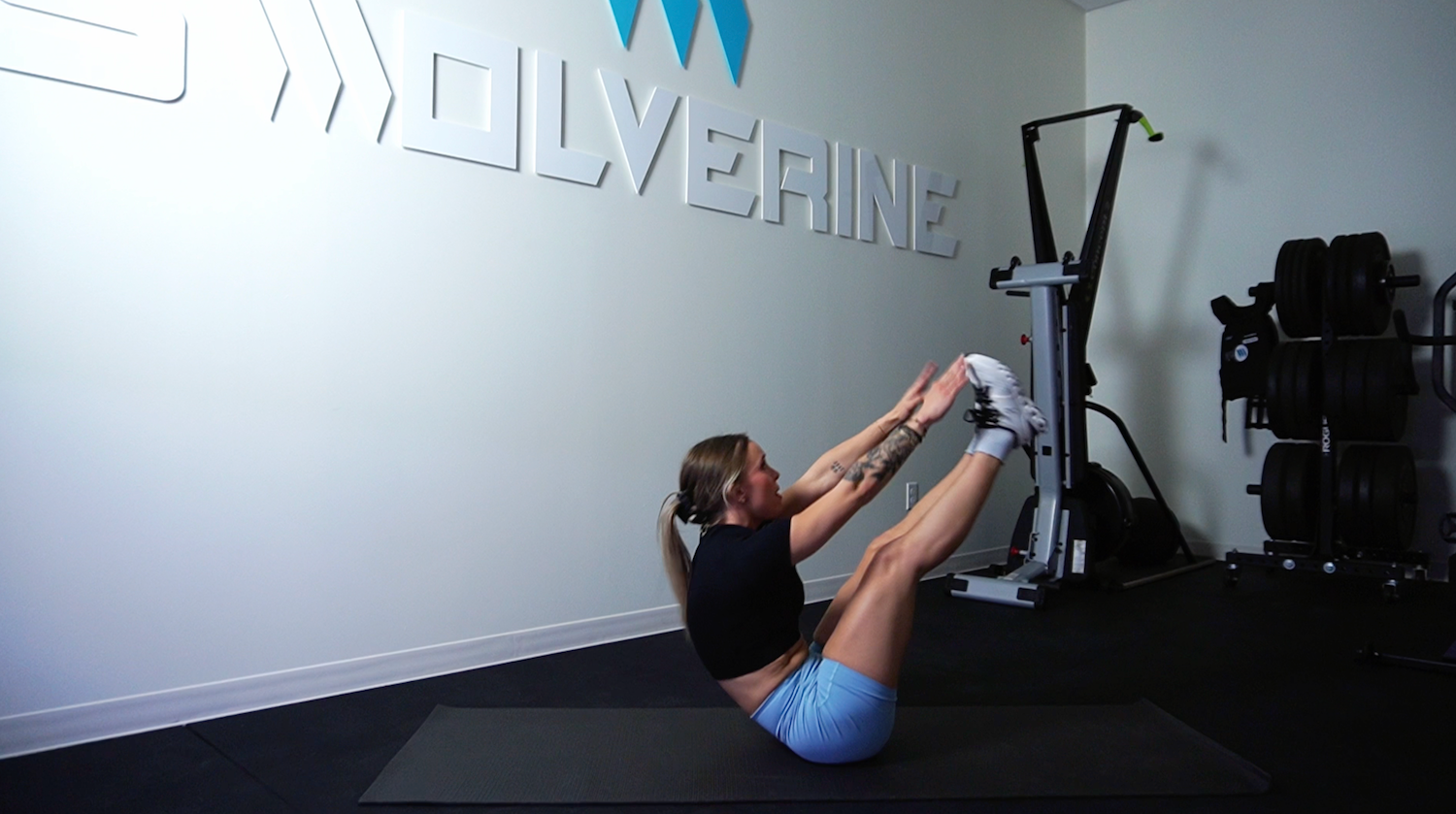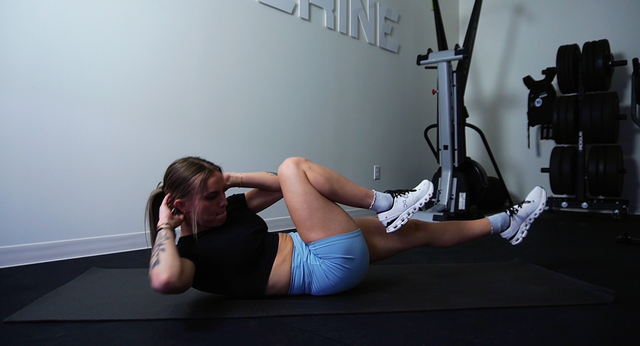Are you ready to take your core workout to the next level? V-Ups are a powerful exercise that not only targets your abdominal muscles but also enhances overall strength and stability. In this ultimate guide, we will delve into the art of mastering V-Ups, offering step-by-step instructions to help you achieve impeccable form. You’ll learn how to engage your entire core effectively, prevent common mistakes, and incorporate variations that challenge your body in new ways.
Whether you're a beginner seeking foundational techniques or an experienced athlete looking to refine your skills, this guide will equip you with the knowledge and confidence to sculpt a strong, defined core. Get ready to unlock the full potential of your workouts and transform your fitness journey with V-Ups!
The Benefits of V-Ups for Core Strength and Stability
V-Ups are a powerhouse core exercise that delivers full-body engagement and impressive strength benefits. This dynamic movement targets:
-
Rectus abdominis (your six-pack muscle)
-
Transverse abdominis
-
Internal and external obliques
By adding V-Ups to your training routine, you're building a strong core that supports:
-
Improved posture
-
Reduced risk of injury
-
Better athletic performance
Why V-Ups Are Effective
V-Ups are especially valuable because they train core stability, which is essential for nearly every movement you perform—both in the gym and in daily life. A strong, stable core helps your body move as a coordinated unit, improving:
-
Balance
-
Coordination
-
Functional strength
Unlike exercises that isolate the abs, V-Ups require your entire body to engage. You’ll activate:
-
Hip flexors
-
Quadriceps
-
Lower back muscles
“Core training improves balance and functional movement in athletic and general populations”
— Stenger & Bell, Journal of Strength and Conditioning Research
This makes V-Ups an excellent option for developing strength that translates into sports performance, lifting, and everyday activities.
Proper Form: How to Perform V-Ups Correctly
Form is everything when it comes to maximizing results and avoiding injury. Here's a step-by-step breakdown:
Step 1: Set Your Position
-
Lie flat on your back.
-
Extend your legs fully.
-
Reach your arms overhead.
-
Engage your core (pull your belly button toward your spine).
-
Keep your lower back pressed firmly into the floor.
Step 2: Execute the Movement
-
Simultaneously lift your legs and upper body.
-
Reach your hands toward your feet, forming a "V" shape.
-
Keep your legs straight and your arms extended.
-
Exhale during the lift, using your core to initiate the movement.
Step 3: Lower with Control
-
Pause briefly at the top of the movement.
-
Slowly lower your upper body and legs back to the starting position.
-
Inhale on the descent.
-
Keep your core engaged and your lower back pressed to the ground throughout.
With consistent practice, V-Ups will improve your core control, movement efficiency, and total-body coordination.
Common Mistakes to Avoid When Doing V-Ups
While V-Ups are highly effective, they can be challenging to perform correctly. Be aware of these common mistakes:
1. Arching the Lower Back
Allowing your lower back to lift off the floor can cause discomfort or injury.
-
Fix: Engage your core and press your lower back into the ground throughout the movement.
2. Using Momentum
Swinging your arms and legs to gain height might make the exercise feel easier but reduces its effectiveness.
-
Fix: Focus on a controlled, deliberate motion powered by your abdominal muscles.
3. Rushing the Reps
Speeding through reps compromises form and limits muscle activation.
-
Fix: Perform each repetition with intention. Quality over quantity leads to better strength gains.
By avoiding these pitfalls, you’ll get more out of your V-Ups and reduce your risk of injury.
Variations of V-Ups to Challenge Your Core Further
Once you've mastered the standard V-Up, try these variations to keep your workouts progressive and challenging:
Weighted V-Ups
-
What it is: Hold a dumbbell or medicine ball in your hands as you lift.
-
Why it works: Increases intensity and engages your core even more.
-
Tip: Start with a light weight and progress as your strength improves.
Single-Leg V-Ups
-
What it is: Lift one leg at a time while keeping the other on the floor.
-
Why it works: Enhances balance and isolates each side of the core.
Bicycle V-Ups
-
What it is: Combine the V-Up with a bicycle crunch motion.
-
Why it works: Adds a rotational element to target the obliques.
-
How to do it: Bring one elbow to the opposite knee at the top of the rep, alternating sides.
Each variation offers a unique challenge to your core, helping you prevent plateaus and build functional strength.
How to Incorporate V-Ups into Your Workout Routine
V-Ups are flexible and can be tailored to fit any routine.
For Beginners
-
Perform 2–3 sets of 10–15 reps, twice per week.
-
Focus on form over speed.
For Intermediate to Advanced
-
Add V-Ups into a circuit with exercises like:
-
Planks
-
Russian Twists
-
Leg Raises
-
-
Use 30–60 second intervals, with minimal rest between movements.
Full-Body Training Integration
-
Warm-Up Activation: Use V-Ups to fire up your core pre-lift.
-
Finisher: End your session with 2 rounds of 15–20 reps to burn out the core.
“Integrating core exercises like V-Ups in a variety of formats helps build endurance, stability, and performance.”
— McGill & Karpowicz, Journal of Sports Science and Medicine
No matter how you use them, consistency is key to making progress with V-Ups.
V-Ups vs. Other Core Exercises: A Comparative Analysis
When it comes to core training, understanding how V-Ups compare to other popular movements helps you build a balanced program.
V-Ups vs. Crunches
-
Crunches mainly target the rectus abdominis.
-
V-Ups engage multiple muscle groups—obliques, hip flexors, and upper and lower abs.
-
Advantage: V-Ups offer a more comprehensive and functional core challenge.
V-Ups vs. Planks
-
Planks are isometric and focus on core endurance and stability.
-
V-Ups are dynamic and involve both concentric and eccentric contractions, building more strength and definition.
-
Balanced Tip: Combine both for maximal benefit—planks for endurance, V-Ups for power.
V-Ups vs. Leg Raises
-
Leg Raises isolate the lower abdominals.
-
V-Ups activate the entire core by combining upper and lower body movement.
-
Result: V-Ups demand more coordination and yield better overall core development.
Tips for Progressing Your V-Up Skills Over Time
Improvement takes consistency and smart progression. Here’s how to level up your V-Up game:
1. Start With Bent-Knee V-Ups
-
Great for beginners to reduce leverage and strain.
-
Transition to straight-leg V-Ups as strength improves.
2. Add Static Holds
-
At the top of the V position, pause for 2–5 seconds.
-
Builds isometric strength and core endurance.
3. Include Complementary Core Movements
Support your V-Up strength with:
-
Hollow holds – teaches core tension and stability
-
Hanging leg raises – develops lower ab strength
-
Russian twists – engages obliques and rotational core control
“Core strength development requires multiple movement planes and progression in difficulty.”
— Escamilla et al., Strength and Conditioning Journal
Nutrition and Recovery: Supporting Your Core Workout Goals
A strong core isn't built by training alone—it requires fuel and recovery too.
Nutrition for Core Gains
Focus on a balanced diet with:
-
Lean proteins: chicken, fish, eggs
-
Healthy fats: avocado, olive oil, nuts
-
Complex carbs: sweet potatoes, brown rice, whole grains
These nutrients support muscle repair, energy production, and training performance.
Hydration
-
Aim for at least 8 glasses of water per day.
-
Increase intake during high-intensity training or hot environments.
Recovery Practices
Rest is when growth happens. Optimize your recovery with:
-
Sleep: 7–9 hours per night
-
Active recovery: light cardio, yoga, foam rolling
-
Stretching: improves flexibility and reduces soreness
Conclusion: Embrace V-Ups for a Stronger, Sculpted Core
Incorporating V-Ups into your fitness routine is a proven way to build a defined, functional, and resilient core. This full-body movement:
-
Targets multiple abdominal muscles
-
Enhances stability and control
-
Scales with your fitness level
With consistent practice, progressive challenges, and smart recovery, V-Ups can elevate your entire fitness journey. Whether you're aiming for aesthetics, performance, or injury prevention, this single movement delivers serious value.
Are you ready to commit to stronger core training with V-Ups?







